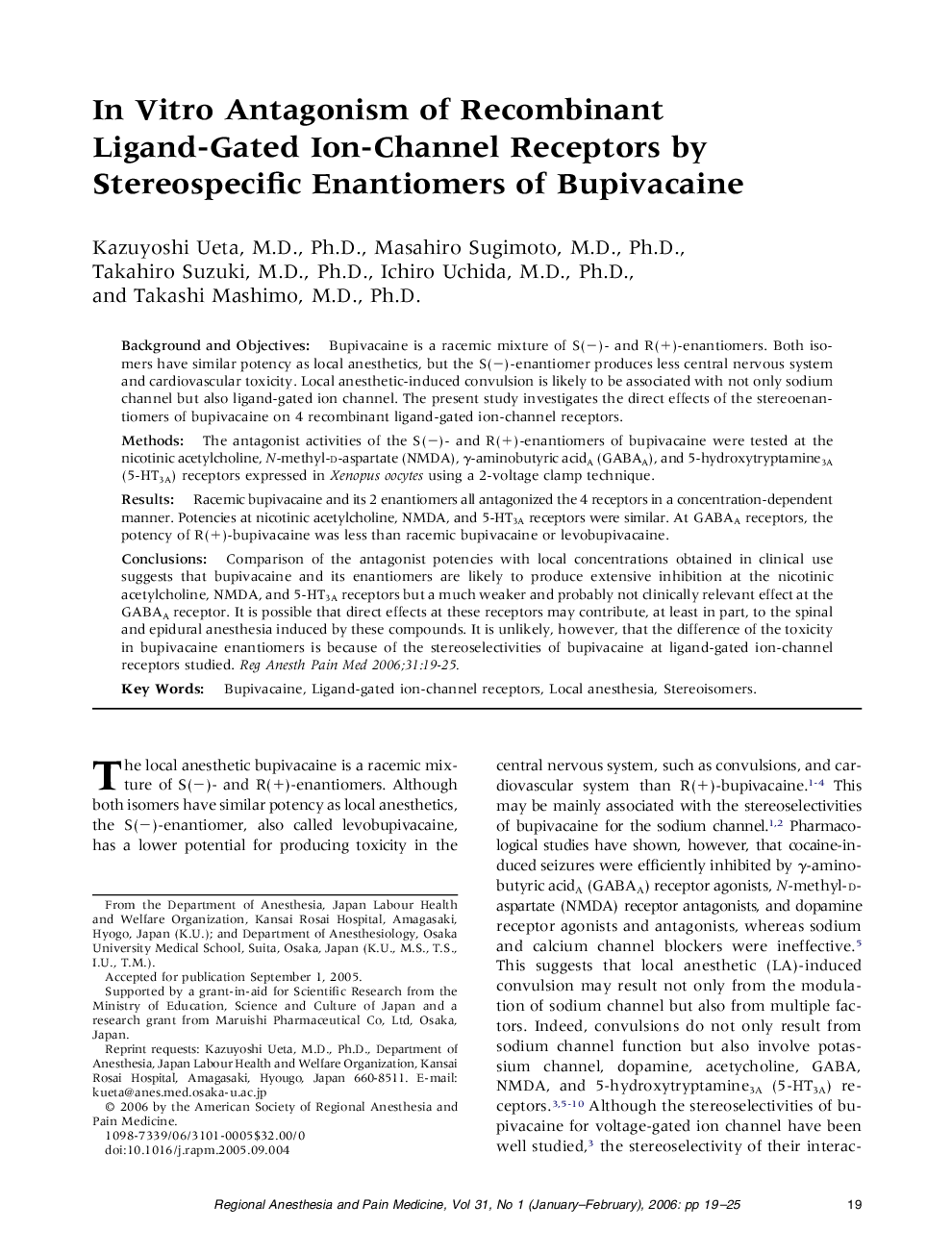| Article ID | Journal | Published Year | Pages | File Type |
|---|---|---|---|---|
| 2767504 | Regional Anesthesia and Pain Medicine | 2006 | 7 Pages |
Abstract
Comparison of the antagonist potencies with local concentrations obtained in clinical use suggests that bupivacaine and its enantiomers are likely to produce extensive inhibition at the nicotinic acetylcholine, NMDA, and 5-HT3A receptors but a much weaker and probably not clinically relevant effect at the GABAA receptor. It is possible that direct effects at these receptors may contribute, at least in part, to the spinal and epidural anesthesia induced by these compounds. It is unlikely, however, that the difference of the toxicity in bupivacaine enantiomers is because of the stereoselectivities of bupivacaine at ligand-gated ion-channel receptors studied.
Related Topics
Health Sciences
Medicine and Dentistry
Anesthesiology and Pain Medicine
Authors
Kazuyoshi M.D., Ph.D., Masahiro M.D., Ph.D., Takahiro M.D., Ph.D., Ichiro M.D., Ph.D., Takashi M.D., Ph.D.,
